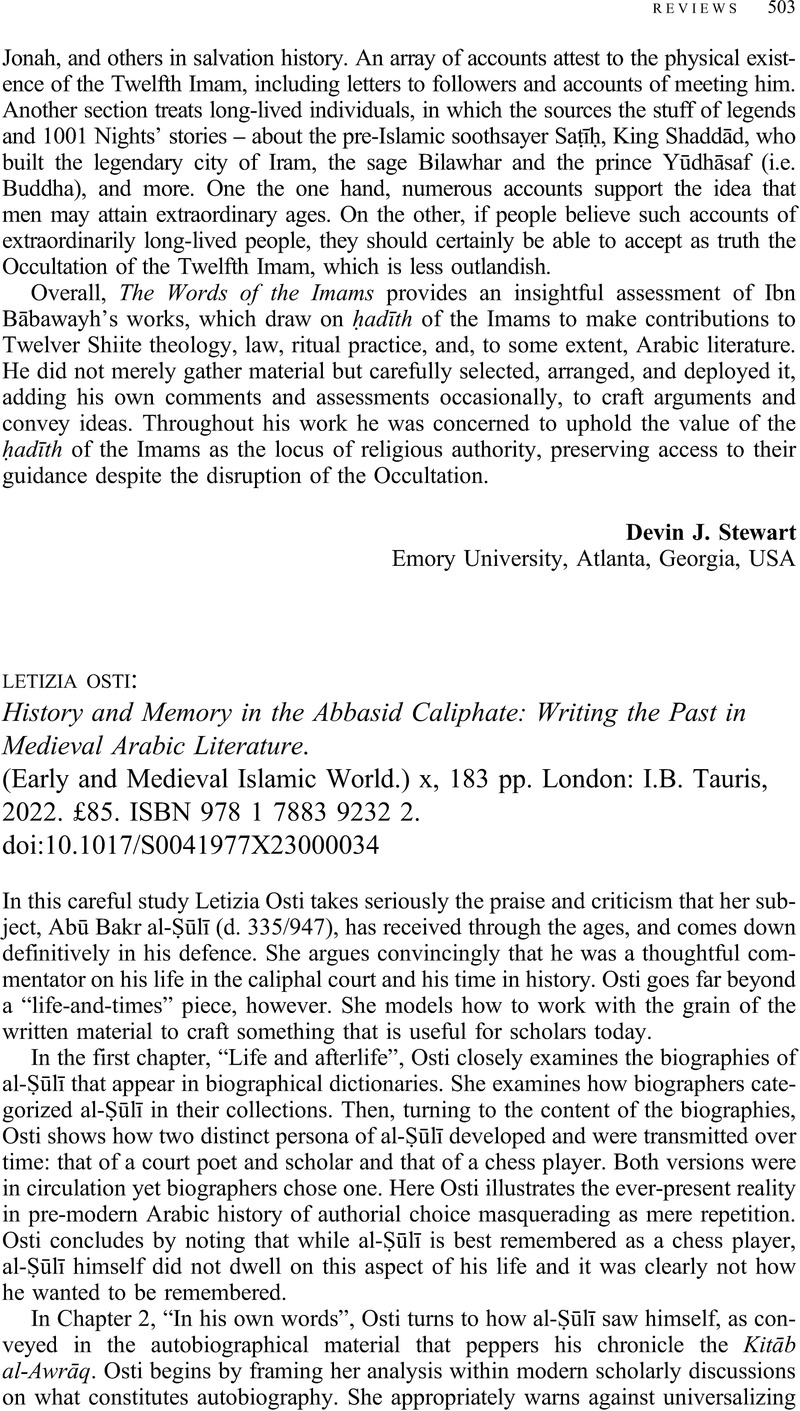No CrossRef data available.
Article contents
LETIZIA OSTI: History and Memory in the Abbasid Caliphate: Writing the Past in Medieval Arabic Literature. (Early and Medieval Islamic World.) x, 183 pp. London: I.B. Tauris, 2022. £85. ISBN 978 1 7883 9232 2.
Review products
LETIZIA OSTI: History and Memory in the Abbasid Caliphate: Writing the Past in Medieval Arabic Literature. (Early and Medieval Islamic World.) x, 183 pp. London: I.B. Tauris, 2022. £85. ISBN 978 1 7883 9232 2.
Published online by Cambridge University Press: 27 March 2023
Abstract
An abstract is not available for this content so a preview has been provided. Please use the Get access link above for information on how to access this content.

- Type
- Reviews: The Near and Middle East
- Information
- Copyright
- Copyright © The Author(s), 2023. Published by Cambridge University Press on behalf of SOAS University of London



